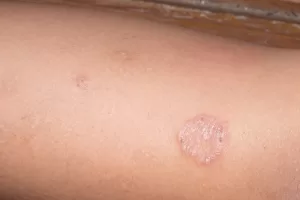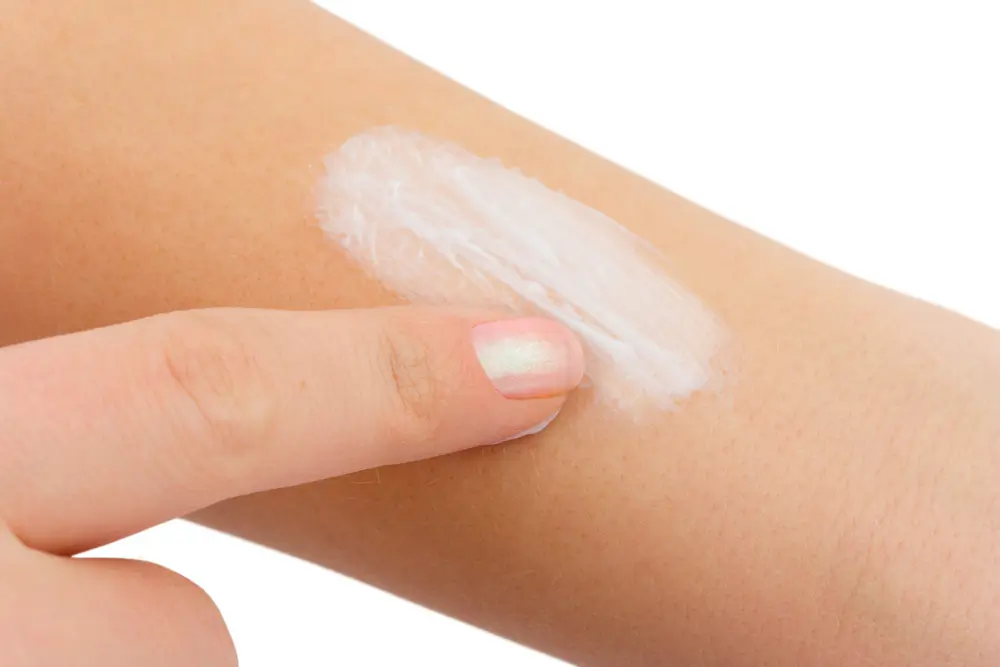Is ring worm caused by a worm?
What is ringworm?
Sometimes when we tell a patient that they (or their child) have “ringworm” they are horrified – often they don’t realise it’s not caused by a worm at all, but is actually a fungal skin infection. The name ” ring worm” comes from the fact that the rash shows up as a pinkish scaly circle- which perhaps resembles a curled-up worm under the skin.
How do you get ringworm?
Ringworm (or taenia corporis to use its medical name), is picked up by skin contact, or touching something that an infected person or animal has touched or handled. It’s very contagious, and usually appears 1-2 weeks after being exposed.
What does ring worm look like?
- This depends on which part of the body is involved.
- Often it’s a circular dry pink patch, which is paler in the middle.
- However, the same fungus can cause redness and irritation in skin folds (the groin, armpits, under the tummy or breasts, or between the toes).
- It can also lead to patches of hair loss on the scalp.
- In animals and household pets it may cause fur to fall out in patches.
How do you diagnose ring worm?
- As mentioned above, symptoms of ringworm usually involve one or more scaly pink patches, that tend to enlarge slowly.
- They’re not usually itchy or crusty.
- If there are many lesions, the diagnosis may be something else (such as psoriasis or pityriasis rosea). If lots of lesion appear quite quickly over hours or days, it’s also unlikely to be ringworm.
- Quite often, people with ringworm will have a good idea what is going on- but a doctor will be able to confirm it by having a look.
Are tests needed?
- Not usually, though if it’s not getting better with standard antifungal treatment, skin scrapings can be taken and sent to the lab to reassess the diagnosis.
- In most cases a doctor will be able to make the diagnosis simply by looking at the rash.
- Any rash that gets worse or does not respond to the usual treatment for ringworm should be reviewed by a doctor, as there may be another cause.
Treatment of ringworm
- There are several antifungal creams that are effective treatment for ringworm- though it’s important to use them regularly and for long enough to fully get rid of it.
- The length of time you need to take treatment for ringworm depends on how bad the infection is, and whereabouts on the body it’s located. Your pharmacist or GP can advise you.
- For more troublesome cases, antifungal tablets may sometimes be needed- this tends to be more of an issue for scalp infections.
- If you have pets, they should be treated appropriately- speak to your vet if you need advice. It’s also advisable to wash your hands regularly, and avoid sharing towels or hairbrushes etc until treatment for ringworm is complete.
If you are concerned about ringworm or have queries about treatment for ringworm , speak to your GP.
Do breast implants cause cancer?
Do breast implants cause cancer? What is Breast Implant Associated Anaplastic Large Cell Lymphoma? Breast Implant Associated Anaplastic Large Cell Lymphoma (BIA-ACLC) has been in the news of late. [...]
Is it ok to take HRT?
Is it OK to use HRT (hormone replacement therapy)? Not infrequently, I have a newly diagnosed breast cancer patient who has been on HRT (Hormone Replacement Therapy). The questions [...]
What’s the best cure for a hangover?
What's the best cure for a hangover?? Why does alcohol cause a Hangover? Most adults have experienced a hangover at some time in their lives- the tremulous vomiting, the violent headache, the [...]






